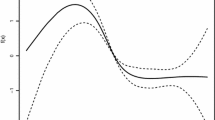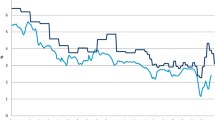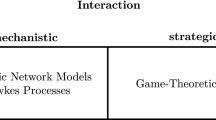Abstract
The need to find a good balance between attractive returns and long-term guarantees has motivated the development of hybrid life insurance products. In these contracts, the premium payments are distributed between a participating and a unit-linked fund, where an additional guarantee fee is applied to the unit-linked return in order to increase the investment guarantee of the participating fund. Moreover, the traditional pricing approach in life insurance is based on models for the financial elements and the mortality elements without any correlations between them. However, recent trends, such as the recent COVID-19 pandemic or the effect of ageing on stock market preferences, motivate us to account for the correlation between changes in demographic trends and the value of financial assets. The purpose of this paper is to price the mixed insurance contract based on longevity and to propose a multi-dimensional approach to explicitly studying the dependence between financial and mortality risks in a joint stochastic continuous time model of interest rates, stock returns, and mortality.


Similar content being viewed by others
References
Alexandrova M, Bohnert A, Gatzert N, Ruß J (2017) Equity-linked life insurance based on traditional products: the case of Select Products. European Actuarial Journal 7(2):379–404
Arık A, Yolcu-Okur Y, Şahin Ş, Uğur Ö (2018) Pricing pension buy-outs under stochastic interest and mortality rates. Scandinavian Actuarial Journal 3:173–190
Artzner P, Eisele KT, Schmidt T (2020) No arbitrage in insurance and the QP-rule. Available at SSRN: https://ssrn.com/abstract=3607708
Bacinello AR (2001) Fair pricing of life insurance participating policies with a minimum interest rate guaranteed. Astin Bulletin 31(2):275–298
Bernard C, Le Courtois O, Quittard-Pinon F (2005) Market value of life insurance contracts under stochastic interest rates and default risk. Insurance: Mathematics and Economics 36(3):499–516
Biffis E (2005) Affine processes for dynamic mortality and actuarial valuations. Insurance: Mathematics and Economics 37(3):443–468
Bohnert A, Born P, Gatzert N (2014) Dynamic hybrid products in life insurance: Assessing the policyholder’s viewpoint. Insurance: Mathematics and Economics 59:87–99
Bohnert A, Gatzert N (2014) Fair Valuation and Risk Assessment of Dynamic Hybrid Products in Life Insurance: A Portfolio Consideration. The Geneva Papers on Risk and Insurance - Issues and Practice 39:148–172
Cairns A (1998) Descriptive bond-yield and forward-rate models for the British government securities market. British Actuarial Journal 4:265–321
Cairns A, Blake D, Dowd K (2006) Pricing Death: Frameworks for the Valuation and Securitization of Mortality Risk. Astin Bulletin 36(1):79–120
Dacorogna M, Cadena M (2015) Exploring the dependence between mortality and market risks. SCOR Papers
Deelstra G, Grasselli M, Van Weverberg C (2016) The role of the dependence between mortality and interest rates when pricing Guaranteed Annuity Options. Insurance: Mathematics and Economics 71:205–219
Devolder P, Azizieh C (2013) Margrabe option and life insurance with participation. Bulletin d’actuariat français 13:47–77
Dhaene J, Kukush A, Luciano E, Schoutens W, Stassen B (2013) On the (in-)dependence between financial and actuarial risks. Insurance: Mathematics and Economics 52(3):522–531
Døskeland T, Nordahl H (2008) Optimal pension insurance design. Journal of banking and finance 32:382–392
Gao H, Mamon R, Liu X (2015) Pricing a guaranteed annuity option under correlated and regime-switching risk factors. European Actuarial Journal 5(2):309–326
Gatzert N, Huber C, Schmeiser H (2011) On the valuation of investment guarantees in unit-linked life insurance: A customer perspective. The Geneva Papers on Risk and Insurance - Issues and Practice 36:3–29
Hanna V, Hieber P, Devolder P (2022) Mixed participating and unit-linked life insurance contracts: design, pricing and optimal strategy. Scandinavian Actuarial Journal 5:421–446
Hull J, White A (1990) Pricing interest rate derivative securities. Review of Financial Studies 3:573–592
Jalen L, Mamon R (2009) Valuation of contingent claims with mortality and interest rate risks. Mathematical and Computer Modelling 49:1893–1904
Liu X, Mamon R, Gao H (2014) A generalized pricing framework addressing correlated mortality and interest risks: a change of probability measure approach. Stochastics: An International Journal of Probability and Stochastic Processes 86(4):594–608
Maurer T (2011) Asset Pricing Implications of Demographic Change. 24th Australasian Finance and Banking Conference
Milevsky M, Promislow S (2001) Mortality derivatives and the option to annuitize. Insurance: Mathematics and Economics 29:299–318
Reuß A, Ruß J, Wieland J (2015) Participating life insurance contracts under risk based solvency frameworks: How to increase capital efficiency by product design. Innovations in Quantitative Risk Management. Springer Proceedings in Mathematics & Statistics 99:185–208
Reuß A, Ruß J, Wieland J (2016) Participating life insurance products with alternative guarantees: Reconciling policyholders’ and insurers’ interests. Risks 4:11
Ruß J, Schelling S (2021) Return smoothing in life insurance from a client perspective. Insurance: Mathematics and Economics 36:245
Zeddouk F, Devolder P (2020) Mean reversion in stochastic mortality: why and how? European Actuarial Journal 10:499–525
Zhao Y, Mamon R (2018) An efficient algorithm for the valuation of a guaranteed annuity option with correlated financial and mortality risks. Insurance: Mathematics and Economics 78:1–12
Acknowledgements
We want to thank the anonymous reviewers and participants of the 10th International Hybrid Conference on Mathematical and Statistical Methods for Actuarial Sciences and Finance for many insightful remarks and discussions.
Funding
This work was supported by the chair Fondation Louvain - Ethias.
Author information
Authors and Affiliations
Corresponding author
Ethics declarations
Conflict of interest
No potential conflict of interest was reported by the author(s).
Additional information
Publisher's Note
Springer Nature remains neutral with regard to jurisdictional claims in published maps and institutional affiliations.
Appendices
Appendix A: Proof of Proposition 1
After defining the T-forward measure, \({\textrm{d}}{\tilde{W}}_t^r = {\textrm{d}}W_t^r + \int _0^t \sigma _r \, B_r(s,T,\theta ) ds\) is a \({{\mathbb {Q}}}^T\)-Brownian motion.
We need then to write the dynamic of the intensity of mortality \(\mu _x(t)\) under the T-forward measure, that is,
where \({\textrm{d}}{\tilde{W}}_t^G = {\textrm{d}}W_t^G,\) \({\textrm{d}}{\tilde{W}}_t^H = {\textrm{d}}W_t^H\) and \({\textrm{d}}{\tilde{W}}_t^{\mu } = {\textrm{d}}W_t^{\mu }\) are \({{\mathbb {Q}}}^T\)-Brownian motions.
As a result,
where \(\rho (0,T)\) is the term of correlation that arises from the dependence only between the interest rate and the mortality rate, defined in Eq. (16).
Appendix B: Proof of Proposition 2
By computing the Radon–Nikodym derivative, we obtain
Then, \({\left\{ \begin{array}{ll} \begin{array}{ll} {\textrm{d}}{\hat{W}}_t^r = {\textrm{d}}{\tilde{W}}_t^r + \sigma _{\mu } \, \rho _{r,\mu } \int _0^t B_{\mu }(s,T,b) {\textrm{d}}s\\ {\textrm{d}}{\hat{W}}_t^G = {\textrm{d}}{\tilde{W}}_t^G + \sigma _{\mu } \, {\overline{\rho }}_{G,\mu } \, \sqrt{1-\rho _{r,\mu }^{2}} \int _0^t B_{\mu }(s,T,b) {\textrm{d}}s\\ {\textrm{d}}{\hat{W}}_t^H = {\textrm{d}}{\tilde{W}}_t^H + \sigma _{\mu } \, \overline{{\overline{\rho }}}_{H,\mu } \, \sqrt{(1-\rho _{r,\mu }^{2})(1-{\overline{\rho }}_{G,\mu }^{2})} \int _0^t B_{\mu }(s,T,b) {\textrm{d}}s\\ {\textrm{d}}{\hat{W}}_t^{\mu } = {\textrm{d}}{\tilde{W}}_t^{\mu } + \sigma _{\mu } \, \sqrt{(1-\rho _{r,\mu }^{2})(1-{\overline{\rho }}_{G,\mu }^{2})(1-\overline{{\overline{\rho }}}_{H,\mu }^{2})} \int _0^t B_{\mu }(s,T,b) {\textrm{d}}s\\ \end{array} \end{array}\right. }\)
are \({{\mathbb {Q}}}^{\mu }\)-Brownian motions.
The objective is to compute the expectation of \(\bigg (\frac{G_T}{G_0} - K\bigg )^{+}\) under the new measure. So, we will express this expression as follows
Hence,
Let’s express the dynamic of the fund G under \({{\mathbb {Q}}}^{\mu }\) in order to get the solution of its differential equation. We move first from the risk-neutral measure to the T-forward measure, then to the forward-mortality measure.
Under the forward measure:
Under the forward-mortality measure:
After integration, we obtain the SDE of the latter expression as follows:
This can also be written as
Under \({{\mathbb {Q}}}^{\mu },\) \(\frac{G_T}{G_0}\) is log-normally distributed which allows us to write Equation (37) as
where \(\Phi \) is the cumulative distribution function of a standard normal variable and \({\hat{m}}_G\) and \({\hat{v}}_G\) are, respectively, the expectation and the variance of \(\ln \left( \frac{G_T}{G_0}\right) \) under the forward-mortality measure, defined in Eqs. (17) and (18).
Appendix C: Proof of Proposition 3
We start by writing the dynamic of the fund F under the forward-mortality measure
After integration,
hence, the expression of \(\frac{F_T}{F_0}\) can be written as
From this end, we can compute \( {{\mathbb {E}}}^{{{\mathbb {Q}}}^{\mu }}\left[ \frac{F_T}{F_0}\right] = e^{{\hat{m}}_F+ \frac{{\hat{v}}_F}{2}}\) with
where \({\hat{m}}_F\) and \({\hat{v}}_F\) are, respectively, the expectation and the variance of \(\ln \left( \frac{F_T}{F_0}\right) \) under the forward-mortality measure.
Appendix D: Proof of Proposition 4
Referring to Sect. 4, the first and the third expectations can be solved explicitly as follows:
and
Whereas the expectation in the middle can be written as
We then develop the two processes I and II:
and
The independence between these two processes allows us to split Eq. (38) to
Appendix E: Size of the loss in percentage of the premium—annual guarantee contract
Rights and permissions
Springer Nature or its licensor (e.g. a society or other partner) holds exclusive rights to this article under a publishing agreement with the author(s) or other rightsholder(s); author self-archiving of the accepted manuscript version of this article is solely governed by the terms of such publishing agreement and applicable law.
About this article
Cite this article
Hanna, V., Devolder, P. Valuation of mixed life insurance contracts under stochastic correlated mortality and interest rates. Eur. Actuar. J. 14, 63–98 (2024). https://doi.org/10.1007/s13385-023-00354-4
Received:
Revised:
Accepted:
Published:
Issue Date:
DOI: https://doi.org/10.1007/s13385-023-00354-4




